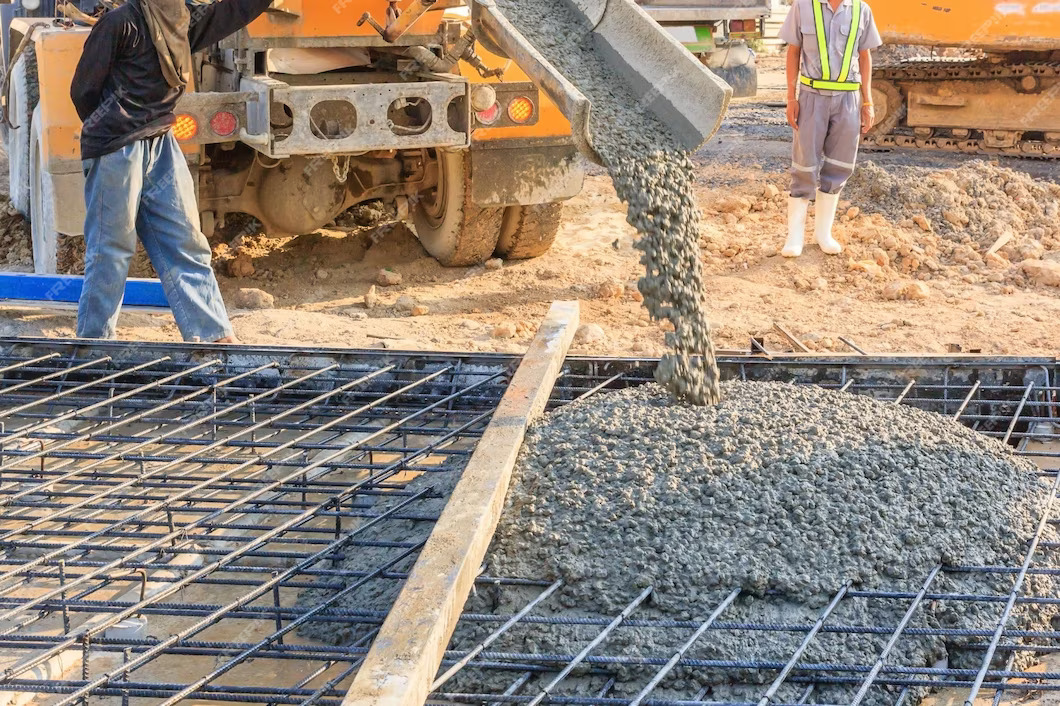Benefits of contcrete slabs – Detail Guide
- 1 Benefits or Features of concrete slabs
- 1.1 Strength
- 1.2 Durability
- 1.3 Recyclability
- 1.4 Flexibility
- 1.5 Cost
Concrete is one of the most versatile building materials, as it can be formed into various shapes and remains durable over time. Furthermore, its heat-reflective qualities help make buildings more energy-efficient than their alternatives.
Plain concrete consists of a mixture of cement, sand, and coarse aggregates mixed together with water to form the base material for concrete construction. Other ingredients may also be added for special effects or to change its properties – for instance, accelerating or retarding agents to speed or slow the setting process.
Benefits or Features of concrete slabs

Strength
The concrete slab is one of the most durable building materials, capable of withstanding tremendous amounts of pressure while withstanding heat as well. It is widely used in high-rise building construction; high strength concrete can reduce structural requirements for support purposes and therefore lower costs significantly.
Cement is the foundation of concrete, giving it its strength. To reach desired strengths, a lower water-to-cement ratio must be maintained; however, this may render the mixture unworkable or make placement challenging; when this occurs admixtures may be utilized to increase workability and ease its placement.
Concrete mixes containing industrial byproducts such as expanded slag and clay can be combined to make lightweight concrete that’s much simpler and faster to work with than its traditional counterparts.
Durability
Concrete is widely used to construct the frameworks of buildings, and can be formed into an assortment of shapes and textures. It also lends itself to architectural innovations by accommodating a range of other materials into its mix. Concrete can also be altered with various admixtures that alter its properties such as plasticizers to increase workability, retarders to slow set time, or superplasticizers that decrease water content.
Buildings constructed from concrete are among the most energy-efficient on the market. Their insulating properties help retain heat indoors, cutting energy usage and heating system strain. Plus, concrete doesn’t release toxic chemicals or volatile organic compounds (VOCs). Furthermore, concrete can even be recycled after it has served its purpose, furthering environmental sustainability efforts and decreasing waste.
Recyclability
Recycling concrete has become increasingly common. Reclaimed aggregate can be used in new concrete mixes, saving natural raw materials such as gravel and sand while simultaneously decreasing energy use and greenhouse gas emissions due to using less cement in its composition than alternative mixes with both manufactured and natural aggregates.
Recycled concrete aggregate (RCA) can be used to replace up to 30% of the aggregate in a standard concrete mixture without significantly impacting its strength, stiffness, or freeze-thaw resistance. Furthermore, its reduced transportation costs make this an economical solution given that high-grade aggregates often must be shipped over long distances.
Concrete can also be used to create permeable pavement, which is more eco-friendly than traditional road materials like asphalt and stone due to its permeability allowing water to pass through it easily.
Flexibility
Concrete can be formed into various designs using different molds or mixed with pigments for desired colors. As a versatile material, it can also be hand-applied, sprayed on, pumped out or grouted into place to form lasting surfaces.
Low permeability makes concrete an effective insulator, helping buildings stay cool in summer and warm in winter while saving on energy costs over time. Furthermore, its fireproof properties protect residents against flames and smoke exposure, making concrete an excellent choice for homes located in areas prone to wildfire.
Additionally, concrete can be produced in exactly the quantity required for any job – reducing waste and overall operating costs as well as providing for potential reuse should occupancy change in a building.
Cost
Concrete is one of the world’s most beloved construction materials, made up of Portland cement, water, and aggregates such as natural sand, gravel, or rock. The tensile strength can be increased significantly by adding iron bars. Concrete serves numerous uses including pavers, paver blocks, curbs, and drainpipes – its popularity being second only to steel construction materials.
Concrete buildings require less maintenance and are more cost-effective than other building materials, especially wood. Their heat resistance helps lower energy costs while their air infiltration helps ensure quality indoor environments.
Concrete offers numerous advantages, one being its versatility: production can be tailored specifically for any given task, eliminating waste and the need for additional materials.

















